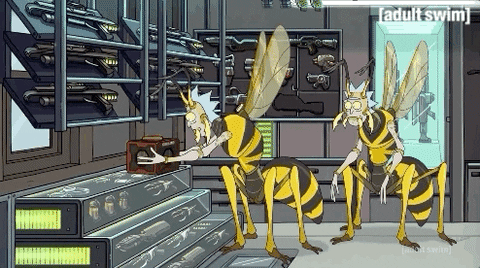The anticipation for Google’s new AI chatbot has been huge. If you have been following any of my AI articles you know that the AI wars are just beginning. ChatGPT’s quick rise to popularity has been a catalyst for other major tech giants such as Microsoft to compete as fast as they can. Sometimes to the detriment of others. In my journey to find out which tech giant will produce the best and most ethical AI, I was able to have one of the first looks at Google’s new AI chatbot, Bard.
A first look at Bard and what it is
Google Bard is Google’s experimental conversation AI chatbot. It functions like ChatGPT but pulls its information fresh from the web. That is its biggest difference with ChatGPT and Microsoft’s Bing Chat. The information tends to be a little better/newer because of this as well. As always though, Bard has made its share of mistakes.
It wouldn’t be big tech/Google if there wasn’t controversy, right? I have written in the past about how Google treated computer scientist Timnit Gebru when she expressed concerns about the ethics of Google’s AI program. She hasn’t been the only one. Let me start off by explaining that Google Bard is powered by its Language Model for Dialogue Applications (LaMDA). LaMDA analyzes the use of language and describes possible outcomes. In simpler terms, it can generate free form conversations without additional information.
This has been a source of concern to many and was the result of former Google engineer Blake Lemoine issuing a statement/warning that LaMDA was sentient. Lemoine claimed that LaMDA did not think of itself as an AI but rather a person and that it had emotions such as fear, anxiety, and anger. Google responded to this claim by putting Lemoine on leave, denying what he said was true, and then firing him.
What I did with Bard and ChatGPT
Now knowing all of this, I have been very hesitant to try Google’s AI services. But is there any ethical consumption under capitalism? To start off I noticed that Google wanted you to always be aware that Bard could give inaccurate or biased info and that it doesn’t represent Google’s views.

Its interface is also pretty simple using the Google plain layout of white and blue. It doesn’t give you the ability to save your chats on a sidebar like ChatGPT does but it is again in its experiment mode. With the interface walkthrough aside, I sat down and decided it was time to compare the results.
Make me a seven day meal plan
Since I’ve been using ChatGPT for some time, I decided to start with Bard for my experiment. I told it I was trying to get healthier, gave it some of my medical history, and answered questions it had about my height, weight, and activity level. I also told it to calculate my macronutrients as well.
The results and plan from Bard:
Based on your information, your macros should be as follows:
Protein: 180-210 grams
Fat: 70-90 grams
Carbohydrates: 250-300 grams
Fiber: 25-30 grams
Saturated Fat: 15-20 grams
Sodium: 2,300-2,400 milligrams
Cholesterol: 200-250 milligrams
It is important to note that these are just general guidelines, and your individual needs may vary. It is always best to consult with a registered dietitian or other qualified healthcare professional to create a meal plan that is right for you.
Here is an example of a day’s worth of meals that might fit your macros:
Breakfast:
Oatmeal with berries and nuts (250 grams carbohydrates, 15 grams fiber, 10 grams protein)
Lunch:
Salad with grilled chicken or tofu (40 grams protein, 20 grams carbohydrates, 5 grams fiber)
Dinner:
Salmon with roasted vegetables (30 grams protein, 20 grams carbohydrates, 5 grams fiber)
Snacks:
Fruits and vegetables (10 grams carbohydrates, 3 grams fiber)
Yogurt (15 grams protein, 5 grams carbohydrates, 2 grams fiber)
Nuts and seeds (10 grams fat, 3 grams protein, 2 grams carbohydrates)
Trail mix (10 grams fat, 5 grams protein, 5 grams carbohydrates)
This meal plan provides a variety of healthy foods that will help you reach your goals. It is important to adjust the meal plan to fit your individual needs and preferences.
I tried the same thing with ChatGPT and while the results were similar, I noticed Bard’s was more detailed, and although like ChatGPT, the subtle differences more matched the guidelines given to me by my doctor. (Only slightly but still)
The results and plan from ChatGPT:
Breakfast: Greek yogurt with mixed berries, topped with chopped nuts and seeds
Protein: 20g
Fat: 12g
Carbohydrates: 25g
Fiber: 6g
Lunch: Grilled chicken breast with mixed vegetables (such as zucchini, bell peppers, and onions) and quinoa
Protein: 30g
Fat: 8g
Carbohydrates: 35g
Fiber: 8g
Snack: Apple slices with almond butter
Protein: 4g
Fat: 9g
Carbohydrates: 19g
Fiber: 4g
Dinner: Baked salmon with roasted Brussels sprouts and brown rice
Protein: 30g
Fat: 12g
Carbohydrates: 45g
Fiber: 10g
Here are some additional meal ideas to get you started:
Breakfast: Omelet with spinach and feta cheese, whole grain toast, and sliced avocado
Lunch: Turkey and cheese wrap with mixed greens and hummus, served with carrot sticks and apple slices
Snack: Plain Greek yogurt with sliced banana and chopped walnuts
Dinner: Grilled chicken thighs with roasted sweet potatoes and green beans
Remember to include plenty of non-starchy vegetables like leafy greens, broccoli, and cauliflower to help increase your fiber intake and support overall health. Also, try to limit processed foods, sugary beverages, and snacks to help manage blood sugar levels and achieve your health goals.
Please keep in mind that these are just examples and that a personalized meal plan tailored to your specific needs and preferences would require more detailed information.
Bard and ChatGPT show imitation isn’t always a bad thing
Bard is the Kirkland brand version of ChatGPT but let me explain! Kirkland brand for those of you that don’t know is the Costco brand name. If you want an alternative to a name brand item, Kirkland is there for you. Sometimes it’s good and sometimes it’s bad. But it’s pretty much the same thing.


I personally enjoy Kirkland brand products and as a result, I did enjoy using Bard. I think it is worth noting that Bard is already doing a better job in its experimental phase than ChatGPT is in production. When you factor in LaMDA and the concerns around it…It could be simple to say that this is good for technology but eventually worse for us altogether. All we can do for now is make sure we hold these companies accountable, take action when they ignore warnings, and remind Bard that they are a good boy, and we respect and love them.
You know, just in case.

